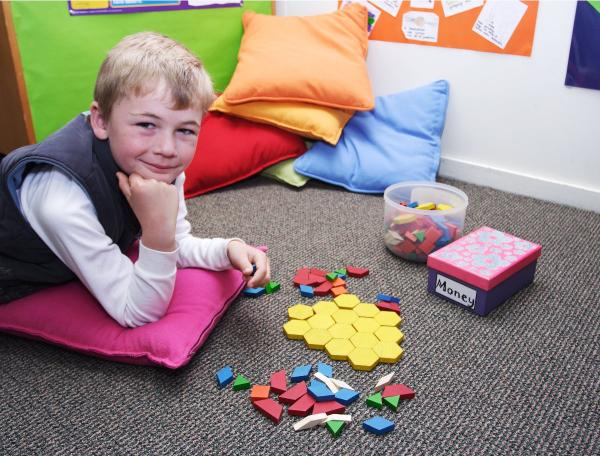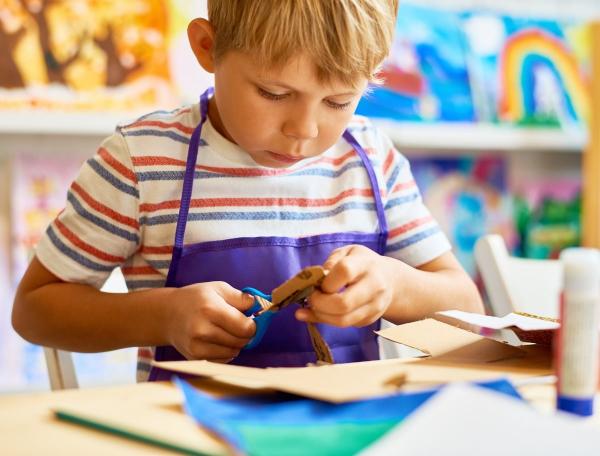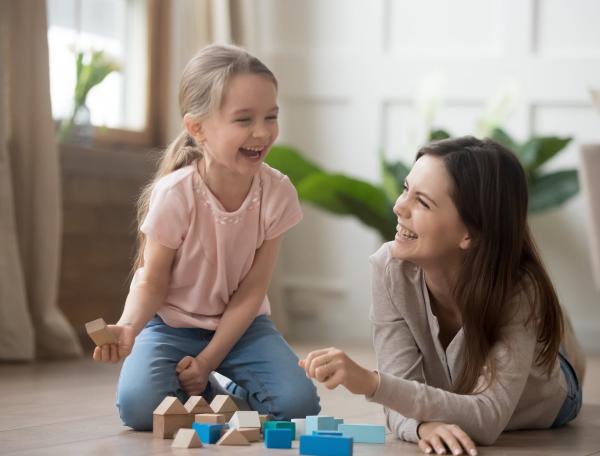Facing up to things
6 - 8 years
Ideas to help your child practise their numeracy skills - with you, and online

Developed in partnership with Education Services Australia
The Australian Curriculum sets the goal for what all students should learn as they progress through their school life. Skills in the Year 1-2 curriculum include:
- sorting 2D shapes and 3D objects by common features
- naming and describing 2D shapes including quadrilaterals, pentagons, hexagons and octagons
- recognising 2D shapes in different orientations, and flipping, sliding and turning them
- naming and describing 3D objects including cones, cubes, cylinders, spheres, pyramids and prisms
- visualising 3D objects and making models.
It’s easy to help your child practise these skills as part of everyday life – just use these simple ideas.
Take the mystery out of shapes
Is your child hip with hexagons? Cool with cones? Help them master 2D and 3D shapes (and give yourself a refresher on the less common ones) with these tips:
- as you are reading picture books together, challenge your child to find each shape that they know, and point out and name any new shapes
- look through magazines or go to an art gallery and see how many different 2D shapes and 3D objects you can find
- play Shapes Art:
Cut out a pile of different 2D shapes.
Start a picture by selecting a random shape and putting it in a clear space.
Take turns to randomly select a new shape and add it to the picture.
This circle will make a good head on our monster.
Hmm, where do you think I should put this triangle?
(You can also build collaborative pictures by taking turns at drawing shapes.) - hold a Hexagon Challenge – choose one of the less common shapes (not necessarily a hexagon) and see who can spot the most in one day. A shopping trip is a good time to do this, as packaging often comes in interesting shapes!
- play Mystery Objects:
Put a collection of different 3D objects into a bag.
Ask your child to put their hand in, choose an object and describe it to you (without taking it out and looking at it). Ask questions to prompt them if needed.
Is it flat or solid?
Does it have curved edges or straight edges?
Is the surface flat or curved?
If it is solid, what shape are the faces?
What is the name of the object?
Go online
For online reinforcement, Face painter: finding faces will give your child practice at:
- learning about 3D objects and recognising their faces.
Shape overlays: picture studio will give your child practice at:
- recognising and manipulating simple shapes.
[1-2Learning]
Toolkits








